How To Get Rid Of Carpenter Bees Around Your Home
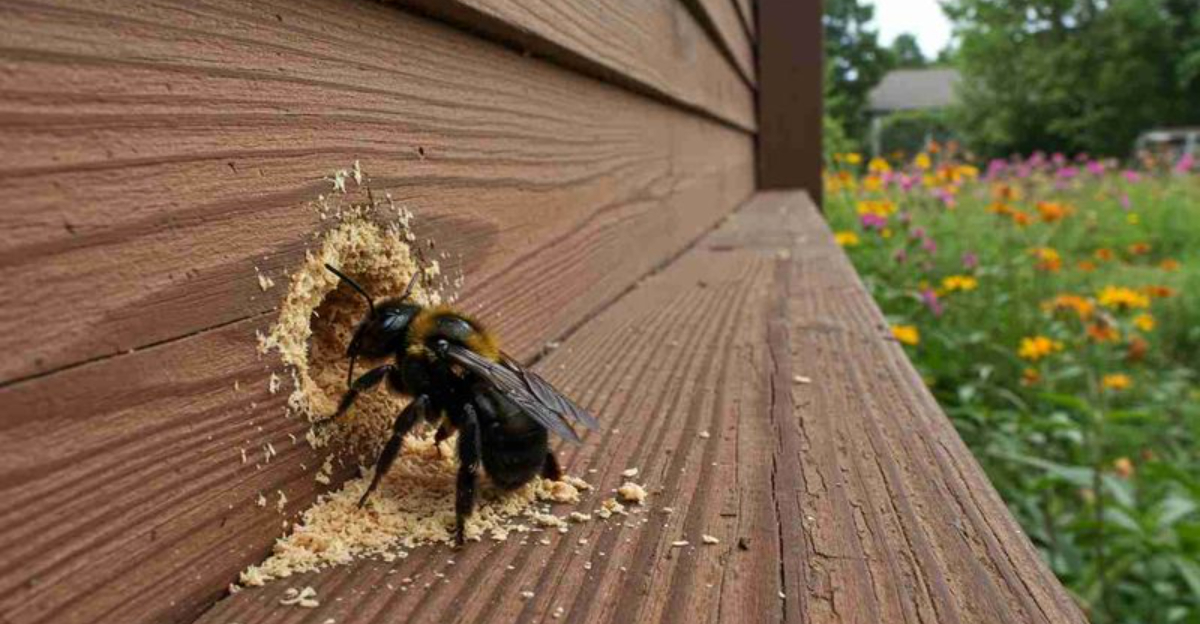
Ever noticed those perfect round holes in your wooden deck? That’s the handiwork of carpenter bees, the industrious insects that can turn your beautiful home structures into their personal condos.
While these pollinators serve an important role in our ecosystem, their wood-boring habits can cause serious structural damage over time. Let’s explore some effective methods to send these buzzing carpenters packing without harming your home in the process.
1. Paint Or Varnish Exposed Wood

Carpenter bees hate painted surfaces! They’re looking for raw, untreated wood to build their nests. A fresh coat of exterior paint or varnish creates a barrier they can’t easily penetrate.
Annual maintenance of your wooden structures not only protects against these pests but also extends the life of your deck, siding, and fence posts. Two benefits from one simple task!
2. Set Up Carpenter Bee Traps
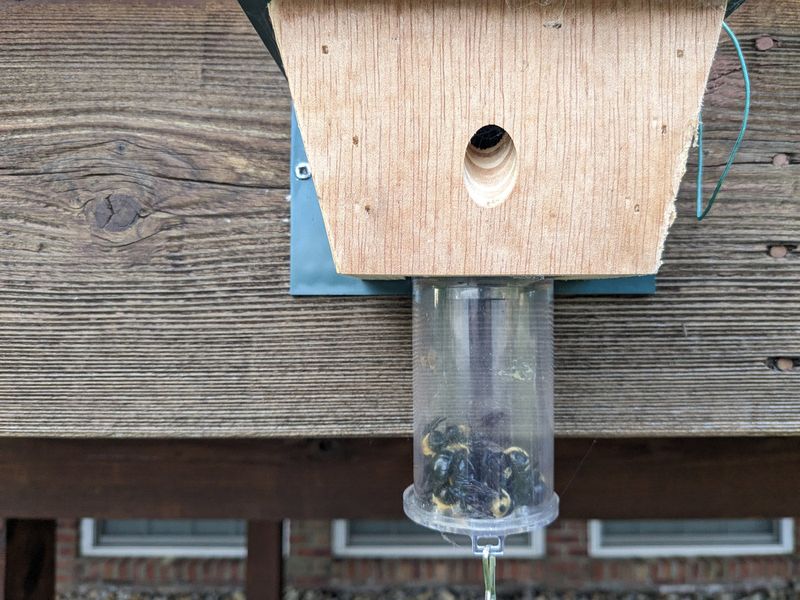
Store-bought or DIY traps work wonders for reducing carpenter bee populations. These clever devices mimic the bees’ preferred nesting holes but function as one-way entrances. Once inside, the bees can’t find their way out. Hang these traps near damaged areas or previous nesting spots. For best results, install them in early spring before the bees establish new colonies.
3. Fill Existing Holes
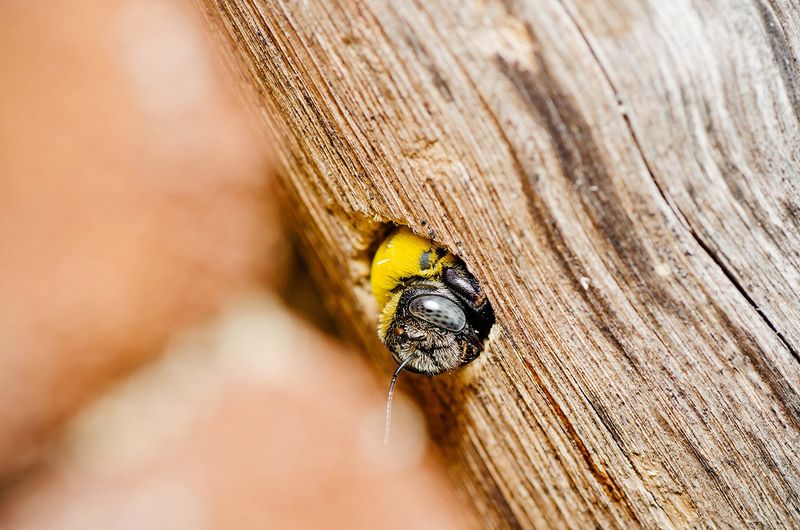
Don’t leave those perfectly drilled holes open! Stuff them with steel wool, then seal with wood putty or caulk. This simple fix prevents new bees from moving into abandoned tunnels.
Wait until evening when bees are less active before plugging holes. Check your repairs regularly during bee season. Sometimes persistent bees will try to drill through soft fillers, so choose durable materials for long-term protection.
4. Create Noise Near Nesting Areas

Surprise! Carpenter bees hate loud noises and vibrations. Playing music or running power tools near infested areas can drive them away temporarily. This method works best as a short-term solution while you implement more permanent controls. Try hanging wind chimes near problem spots for a constant, gentle deterrent that won’t disturb your neighbors like a constantly running radio might.
5. Apply Citrus Oil Spray

Sweet-smelling citrus might please your nose, but carpenter bees find it absolutely revolting! Mix orange or lemon essential oils with water in a spray bottle and apply to vulnerable wood surfaces.
This natural repellent needs frequent reapplication, especially after rain. The pleasant aroma makes this solution perfect for areas where you entertain guests. No harsh chemical smells, just fresh citrus scent that keeps bees at bay.
6. Install Bee Houses For Alternative Nesting
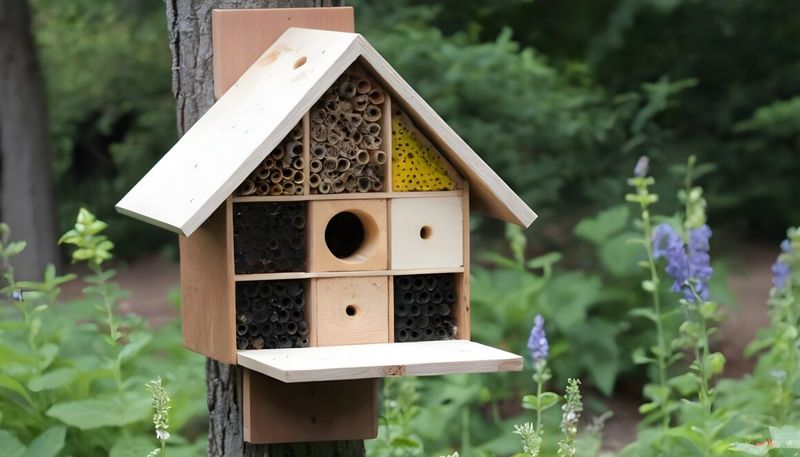
Redirect carpenter bees to more appropriate housing! Set up bee houses filled with bamboo tubes or drilled blocks in your garden, away from your home structures.
This eco-friendly approach gives bees somewhere else to nest while maintaining their important pollination services. Position these alternative homes in sunny spots with morning exposure, as carpenter bees prefer warming up early in the day.
7. Replace Vulnerable Woods

Cedar and redwood naturally resist carpenter bees thanks to their aromatic oils and dense grain patterns. Consider replacing highly susceptible woods like pine, fir, or cypress in problem areas.
Though initially more expensive, these resistant woods pay for themselves by reducing ongoing maintenance and repairs. For budget-friendly alternatives, pressure-treated lumber offers similar protection at a lower price point.
8. Apply Almond Oil To Wood Surfaces
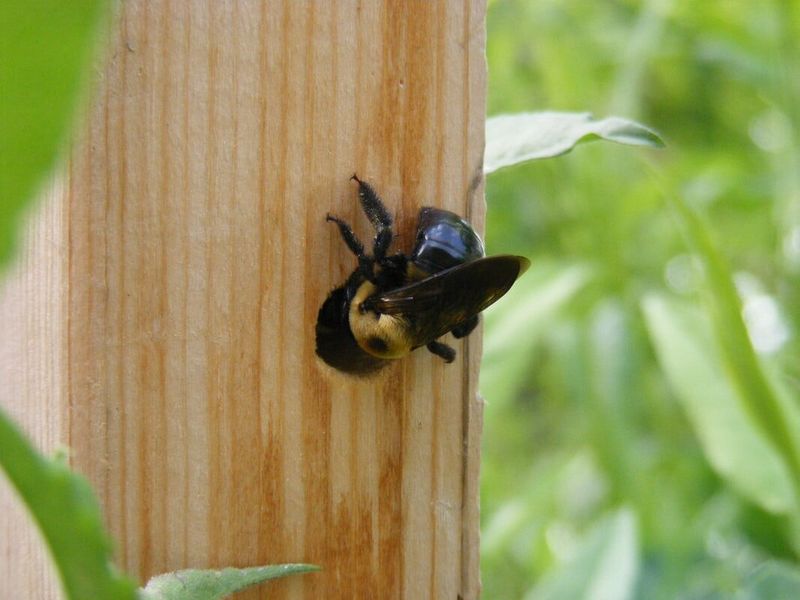
Carpenter bees despise the smell of almond oil! This surprising natural deterrent creates an invisible barrier that keeps them from landing and starting new holes. Simply wipe raw wood surfaces with a cloth dampened with almond oil. The treatment lasts several weeks before needing reapplication. This method works particularly well for decorative wooden elements like porch railings and garden furniture.
9. Use Sound Wave Devices
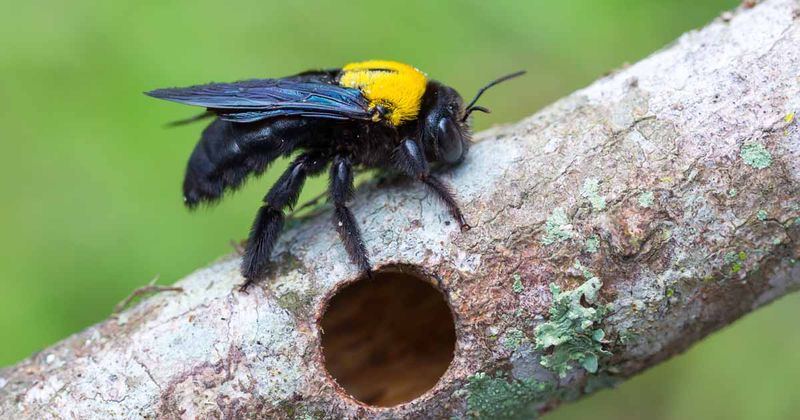
Modern technology offers ultrasonic repellers that emit sound waves bees find intolerable. These devices plug into outdoor outlets and create an invisible barrier around your home. Most models are silent to human ears but effectively drive away carpenter bees and other pests. Coverage ranges vary by model, so you might need multiple units for larger properties. Some solar-powered options eliminate the need for electrical connections.
10. Encourage Natural Predators

Woodpeckers love feasting on carpenter bee larvae! Attract these natural predators by installing woodpecker-friendly feeders filled with suet or peanut butter near infested areas. Other bee predators include certain wasps and birds like swallows. Creating habitat for these helpful creatures establishes a natural control system. A diverse backyard ecosystem generally means fewer pest problems of all kinds.
11. Apply Boric Acid Powder

Boric acid creates an effective barrier against carpenter bees when puffed into existing holes. This powder damages their digestive systems and outer shells, eventually killing them. Use a bulb duster for precise application into hard-to-reach spots. Always wear protective gear when handling boric acid. This method works best as part of a comprehensive approach, combined with hole-filling after treatment.
12. Create Decoy Wood Traps

Strategically place sacrificial wood pieces around your property to lure carpenter bees away from valuable structures. Soft pine boards work perfectly as attractive alternatives. Position these decoys in sunny spots where bees are likely to find them. Once colonized, you can remove and replace these boards periodically. This method redirects damage to disposable wood while protecting your home’s structural elements.
13. Professional Pest Control Services

When infestations become overwhelming, professional exterminators offer targeted treatments that reach deep into nesting galleries. They have access to commercial-grade products and specialized equipment.
Professionals can also identify hidden damage and provide comprehensive protection plans. Many companies now offer eco-friendly options that protect your family and pets. The peace of mind from professional service often justifies the higher cost.






